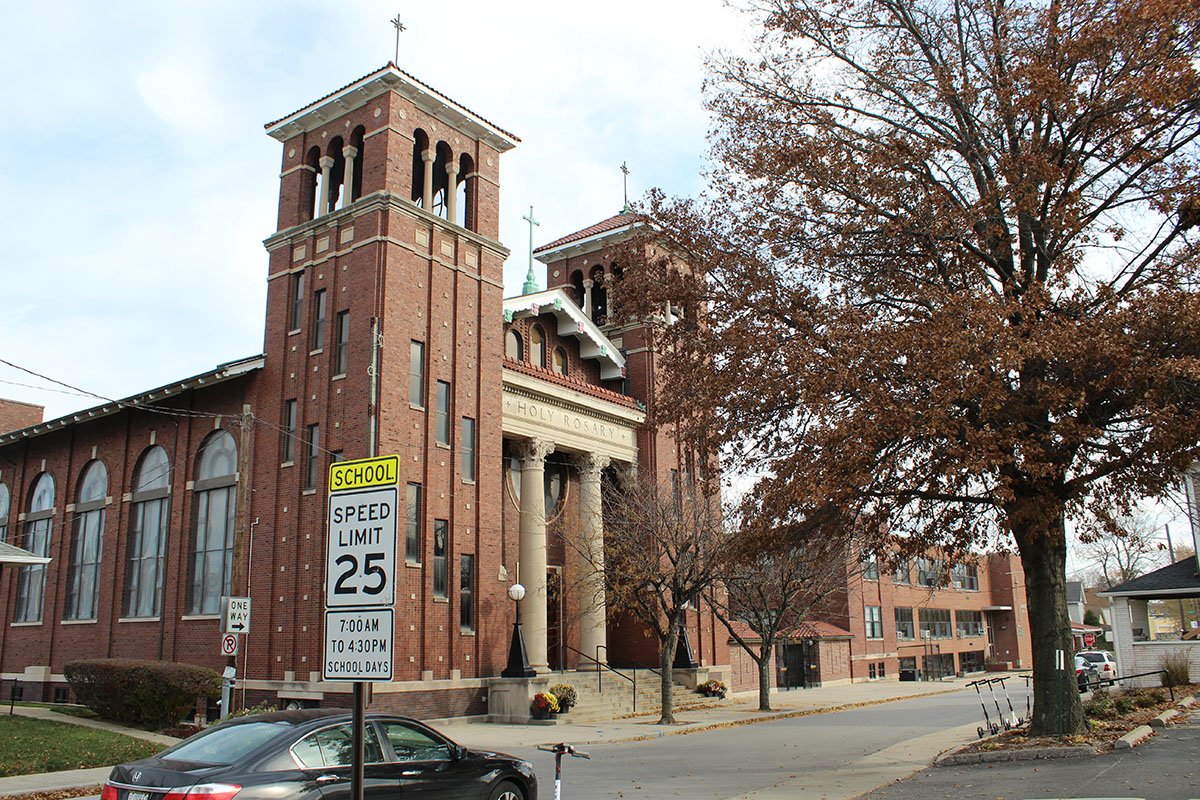25. Ethnic Traditions Kept Alive through Festivals
James Glass
Column that appeared in the Indianapolis Star onIndianapolis history has been full of the arrival of new immigrants since before the Civil War. As the new residents have settled in, they have kept alive the traditions of their ancestral homelands through special events. Today, many immigrants to the city come from Mexico and nations with Hispanic cultures. Other ethnic communities have been in the capital city for many generations, and many celebrate ties to their heritage through festivals. Let’s look at how descendants of immigrants from three European nations share their traditions.
Since 1984, the Holy Rosary Catholic Church parish in the Holy Rosary-Danish Church historic neighborhood southeast of downtown has sponsored the Italian Street Festival each June. Holy Rosary Church at 520 Stevens Street has been a center of Italian traditions in Indianapolis since 1909, and the families of many of its parishioners originally came from Sicily. According to Bernie Greene, Business Manager for the parish, the members put on the festival as both a fund-raiser and a big Italian family reunion. Some people who grew up in the neighborhood and have moved away plan their vacations in order to be present each June. Families who have lived in Indianapolis for four generations manage many of the food stands at the street festival, which features 25 varieties of Italian food and entertainment consisting of both Italian and contemporary music. Greene says that some 20,000 people come each year to participate in the festivities on two evenings, this year on Friday and Saturday, June 10 and 11. The Italian Heritage Society of Indianapolis assists in the festival and in other activities that foster appreciation of Italian heritage, including hosting bocche games, a traditional Italian sport, in Lacy Park near the church.
In the Meridian-Kessler neighborhood to the north, the Holy Trinity Greek Orthodox Church maintains the traditions of Greek immigrants to Indianapolis. Many settled initially around 1900 in the area around Military Park downtown, and the original Holy Trinity Church was established on West Street at the site of the current Indiana Historical Society headquarters. As members in the parish grew more prosperous and moved north, they moved their church to its current location at 4011 North Pennsylvania Street, and the traditions of the Greek experience moved also. The church began its annual Greek Festival about 30 years ago in the property behind the church building, and the festival has become a major expression of the traditions of Greece in Indianapolis, according to the Rev. Anastasios Gounaris, pastor of the church. Greeks practice philoxenia, the tradition of hospitality to strangers, and the festival annually welcomes others to the Greek community. The festival emphasizes many types of Hellenic food, but also traditional dancing and costumes. Like the Italian Street Festival, the Holy Trinity event, which this year will be held on September 9 and 10, has become a big family reunion for people raised in the parish and with ties to the Greek American experience in the city.
The most extensive festivals of any European ethnic tradition are those of the Germans in Indianapolis. James D. Gould, Community Events Coordinator for the Athenaeum Foundation, says that its organization has been working hard to organize as many authentic German festivals and special events as possible at the Athenaeum, 401 East Michigan Street downtown. The Athenaeum was constructed by the large German American community between 1892 and 1893 as Das Deutsche Haus, the German House, and the members hosted parties and festivals throughout the year derived from traditions in the mother country. Many of these events faded after World War II, but the foundation has revived several, and now draws people with both recent and nineteenth century German ancestry to the imposing German Renaissance style building. The oldest Indianapolis festival is St. Benno’s Fest, held each April since 1913 to celebrate the brewing of spring beer in honor of the patron saint of Munich. In the fall, the Athenaeum hosts its Okotober Fest, featuring food, beer, and music of Bavaria, and in early November St. Martin’s Fest, in which St. Martin, traditionally a patron of the poor, rides a horse and leads a lantern parade to nearby Lockerbie Square, originally the home of many Germans. On December 6 each year, Nikolaus Fest is celebrated, and St. Nikolaus comes to the Athenaeum and holds court with children, speaking to them in German. The most extravagant festival is the Carnival (Karneval), held just before Lent in the winter, when German Americans dress in colorful costumes and play the roles of princes and princesses while enjoying instrumental music and dancing.

Holy Rosary Catholic Church on Stevens Street, host of annual Italian Street Festival. James Glass, 2018
